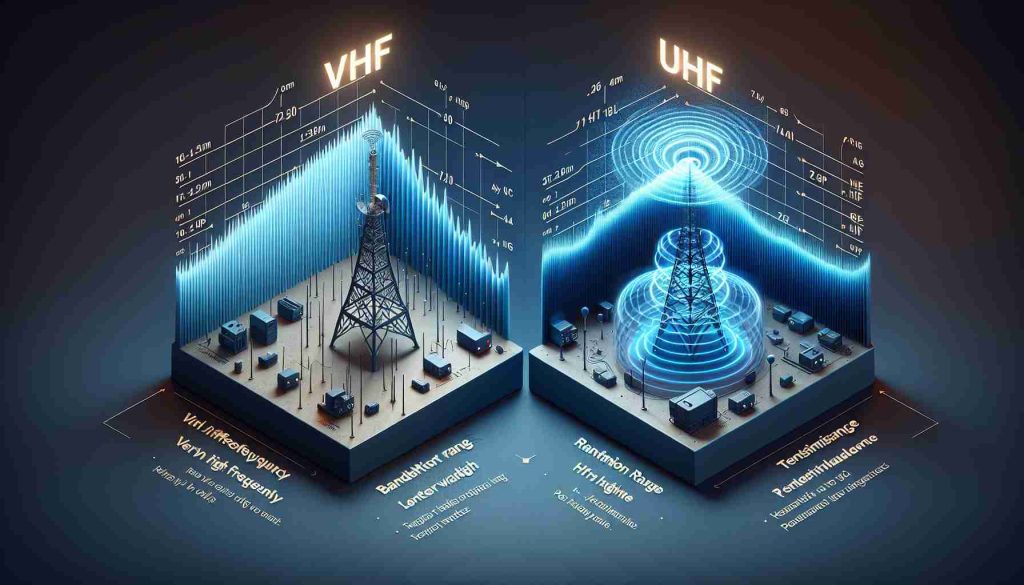Summary:
The terms VHF (Very High Frequency) and UHF (Ultra High Frequency) refer to specific ranges on the radio frequency spectrum that are used for various communication and broadcasting purposes. Both VHF and UHF bands have distinct characteristics that make them suitable for different applications. This article aims to elucidate the key differences between VHF and UHF, offering insights into how these differences play out in practical use, as well as answering common questions on the topic.
Understanding VHF and UHF
Radio waves are electromagnetic waves with varying frequencies and wavelengths. Frequencies are measured in hertz (Hz), and the radio spectrum is divided into bands based on these frequencies.
VHF (Very High Frequency) encompasses the range from 30 MHz to 300 MHz. This band is often used for FM radio broadcasting, television, and two-way radios used by aviation and marine communications, among others.
UHF (Ultra High Frequency) covers the frequencies from 300 MHz to 3 GHz. UHF is commonly used for television broadcasts, mobile phones, GPS, Wi-Fi, and two-way radios such as those used by law enforcement and emergency services.
VHF vs. UHF: The Differences
Wavelength and Range: VHF transmissions have longer wavelengths and can cover a larger range with less power compared to UHF. However, UHF signals provide better coverage in urban environments due to their shorter wavelengths, which allow them to penetrate buildings and obstacles more effectively.
Propagation Characteristics: VHF waves tend to travel further along the earth’s surface and can also propagate through the atmosphere via tropospheric ducting, making them suitable for long-distance communication in open areas. UHF waves are primarily line-of-sight, meaning their propagation is limited by the horizon and physical obstructions.
Antenna Size: Since VHF waves are longer, their antennas are typically larger than those used for UHF frequencies. Conversely, UHF devices can use shorter and more compact antennas, which is advantageous for portable handheld devices.
Bandwidth and Capacity: UHF has greater bandwidth compared to VHF, allowing for higher data rates and more channels within the same frequency space. This makes UHF bands more favorable for modern digital communication systems.
Interference: VHF is generally more prone to interference from electronic equipment and natural sources, like electrical storms. UHF has a higher tolerance for such interference, due, in part, to its higher frequency range.
Licensing and Usage: Both VHF and UHF bands may require licenses to operate, depending on the country and the specific use case. Licensing regulations are set by national communications authorities, such as the Federal Communications Commission (FCC) in the United States.
FAQs:
Q1: Can UHF and VHF radios communicate with each other?
A1: Generally, UHF and VHF radios cannot directly communicate with each other because they operate on different frequency ranges. However, cross-band repeaters can be used to facilitate communication between the two bands.
Q2: Which is better for indoor use, VHF or UHF?
A2: UHF is typically better for indoor use due to its shorter wavelengths, which allow it to penetrate walls and other structures more effectively than VHF.
Q3: Is VHF or UHF better for rural areas?
A3: VHF is usually more suited for rural areas with open spaces due to its ability to cover longer distances with less power. It is less affected by the curvature of the Earth and obstacles like trees and hills.
Q4: Which band is more expensive to use?
A4: Costs can vary depending on the specific equipment and licensing fees. Generally, UHF equipment can be more expensive due to its broader capabilities and the complexities of the devices that operate at higher frequencies.
Q5: Are there any legal implications to using VHF or UHF frequencies?
A5: Yes, many countries require users to obtain a license before operating on certain VHF or UHF frequencies, particularly for commercial or high-power use. Violating these regulations can result in fines or legal action.
Sources:
For more in-depth information regarding VHF and UHF frequency bands, regulatory agencies like the FCC (fcc.gov) provide extensive resources and guidelines on their use and licensing requirements. Additional technical details can often be found through educational institutions or industry-specific publications.
Understanding the differences between VHF and UHF is crucial for anyone working with wireless communications, as each band has its strengths and limitations that affect how they can be used effectively.



